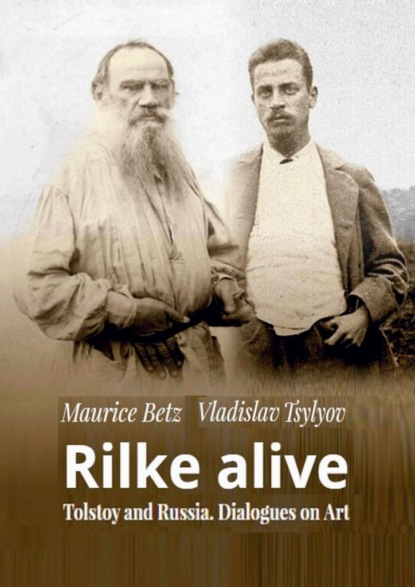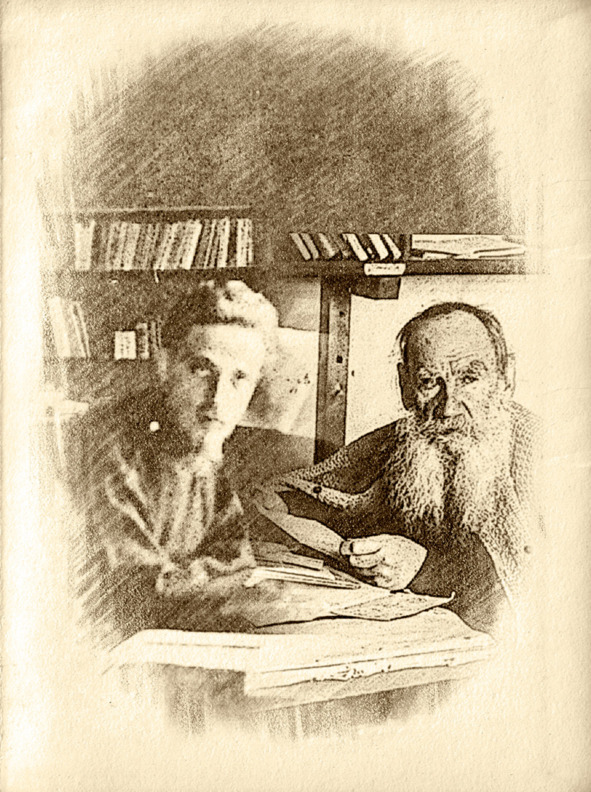
Полная версия:
Rilke alive. Tolstoy and Russia. Dialogues on Art

Rilke alive
Tolstoy and Russia. Dialogues on Art
Maurice Betz
Vladislav Tsylyov
Translator Vladislav Tsylyov
Illustrator Vladislav Tsylyov
Cover designer Vladislav Tsylyov
© Maurice Betz, 2025
© Vladislav Tsylyov, 2025
© Vladislav Tsylyov, translation, 2025
© Vladislav Tsylyov, illustrations, 2025
© Vladislav Tsylyov, cover design, 2025
ISBN 978-5-0065-6412-1
Created with Ridero smart publishing system

Preface: A Failed Blessing
The book offered to the reader is in two parts, united by the common theme of «Rilke and Tolstoy».
What is interesting about the first part? It presents for the first time in English translation the chapter ‘Tolstoy and Russia’, taken from Rilke Alive, written by the gifted French writer and translator Maurice Betz, under the impression of unforgettable meetings with the poet in the spring and summer of 1925. Although Betz’s book was published almost a century ago and has since been scrupulously ‘deconstructed’ into quotations by more than one generation of scholars of Rilke’s work, it has lost none of its artistic brilliance. In his book, Betz describes many places, events and people that Rilke told him about. However, the poet’s meeting with Tolstoy at Yasnaya Polyana occupies a special place in his memoirs.
But what is so interesting about the second part? In it, the contemporary writer Vladislav Tsylyov has tried to recreate, in the form of imaginary dialogues, a conversation that could well have taken place between the two great artists in Yasnaya Polyana, and he has chosen a burning topic – art.
To characterise Betz’s memoirs, their main value lies in the fact that Rilke and Tolstoy do not appear in them as abstract, iconic heroes, but as living and contradictory people. In particular, Betz dispels the widespread myth that their meeting took place in a rapturous atmosphere1 and that, despite some disagreements, there was a rare unanimity between them.
In reality, Tolstoy did not turn out to be the good-natured old man whom Rilke wanted to make a god of art and to whom he dreamed of being like a son. On the contrary, the ’eternal Russian’ appeared to him as a majestic, terrifying, almost demonic being who ’overturned people precisely by the severe directness of his thought, like Job, the fearless co-questioner of a cruel God’.2
Since then I have never felt such deep compassion and fear at the same time..
Rilke made this painful confession in an unpublished chapter of The Notes of Malthe Laurids Brigge. Remarkably, he wanted to call it ’ Leo Tolstoy’.
And if Russia fully lived up to his expectations, becoming for him a fairytale land, ’the last refuge in the heart of God’, with a folk-artist ’full of humility and piety’, the ’furious old man’ Tolstoy clearly did not fit into his idyllic picture.
Later, throughout his subsequent working life, Rilke struggled to resolve Tolstoy’s paradox, experiencing complex and contradictory feelings towards him: on the one hand, the poet admired his ’superhuman’ creative power as an artist; on the other, he condemned him as a religious preacher who had betrayed his vocation and rebelled against art.
Artistic fiction is false, deceptive, arbitrary and harmful to people. You do not write about real life as it is, but about what you think about life, about yourself. For whom is it useful to know how I see this tower or the sea, the Tatar – who is interested in it, who needs it? —
Tolstoy’s assertions of this kind were only deeply disagreeable to Rilke:
Was not Tolstoy, who contained a thousand contradictions, a great, unsurpassed artist? But now he is struggling to break through the organic petrification of his own worldview, like that wonderful early grass at the beginning of Resurrection.
It should be said that Rilke’s polemic with Tolstoy began even before the poet’s trip to Russia. In 1898, Tolstoy published his scandalously famous work What Is Art?, in which he exposed the entire value system of modern culture, and in particular the new artists’ preoccupation with aestheticism and false philosophical doctrines that placed man above God or denied him altogether. Rilke responded to Tolstoy’s ’shameful and foolish pamphlet’ with his essay On Art. To understand the nature of the irreconcilable differences between these two extraordinary artists, it is necessary to turn to their beliefs.
According to Tolstoy, the artist does not interfere in God’s providence, but only reveals His essence on earth to men, reveals to them by His will the truth that
their life comes only from You (John XVII, 7). And that I did not teach them from myself, but I and they came from You (John XVII, 8).
Therefore, the highest ’content of Christian art is such sentiments as promote the unity of men with God and among themselves’, achieved through ’the recognition by each man of his sonship with God’.
Unlike Tolstoy, Rilke believed that the artist is not merely a channel of God’s will, embodying His supreme plan, but that he ’himself participates in the building of this God’, moving towards Him as ’the last, most cherished goal’:
You are everything and I know You in everything; and I am everything and bring everything to You in my going towards You.
And although the place of this meeting will be prepared by all generations of artists, ’ only one will reach it», because ’ all who create are the ancestors of this Solitary One», the Artist of the last times, who will become God:
So I feel that we are the ancestors of a God and that we are reaching out with our deepest loneliness through the millennia to his beginning.
This is what I feel!
Clearly, then, the figure before Rilke at Yasnaya Polyana was not an almighty creator like Michelangelo, called to liberate God, but an apostate who had strayed from the true path. Could Rilke for a moment accept the authority of such a person as Tolstoy and acknowledge the power of his paternity?
It is symbolic that the chapter on Tolstoy, with which Rilke wanted to complete The Notes, remained in the drafts. And the explanation is simple: the prodigal son did not receive the blessing of the great elder.
And if the testimony of Maurice Betz does not seem sufficient to confirm this, the reader can turn to the second part of the book, which presents Rilke’s dialogues with Tolstoy on art. Of course, these dialogues are imaginary, since we know nothing about the actual conversation in Yasnaya Polyana, except that it was about ’the landscape around, Russia, death».
However, there can be no doubt about the veracity of our heroes’ speeches, as they are all quoted from reliable sources.
The chapter ’ Tolstoy and Russia’ has been taken from Maurice Betz’s Rilke vivant, published by Emile-Paul Frères in Paris in the spring of 1937.
All the texts in the first part of the book have been given in my translations, including fragments of letters translated from the German.
All the dialogues in the second part are a work of my imagination.
Rilke’s statements in the dialogues have been taken from his essay On Art.
Tolstoy’s answers in the dialogues have been taken from his works: What Is Art, The Gospel in Brief, The Unification and Translation of the Four Gospels.
All the illustrations are fictional, created by me from public domain photographs from the early 20th century.
Vlsdislav TsylyovTolstoy and Russia
One day Rilke told Maurice Betz ``about the Russian «Theatre of the Little Wooden Actors’, which was giving a series of performances in Paris, and he attended several of them, so moved and delighted was he by the spectacle``.
Конец ознакомительного фрагмента.
Текст предоставлен ООО «Литрес».
Прочитайте эту книгу целиком, купив полную легальную версию на Литрес.
Безопасно оплатить книгу можно банковской картой Visa, MasterCard, Maestro, со счета мобильного телефона, с платежного терминала, в салоне МТС или Связной, через PayPal, WebMoney, Яндекс.Деньги, QIWI Кошелек, бонусными картами или другим удобным Вам способом.
Примечания
1
This version was the subject of a letter from Rilke to his Russian friend Sophia Shill immediately after the meeting, the next day.
2
in the words of Maxim Gorky, who was well aware of Tolstoy’s temperament.
Вы ознакомились с фрагментом книги.
Для бесплатного чтения открыта только часть текста.
Приобретайте полный текст книги у нашего партнера:
Полная версия книги
Всего 10 форматов



